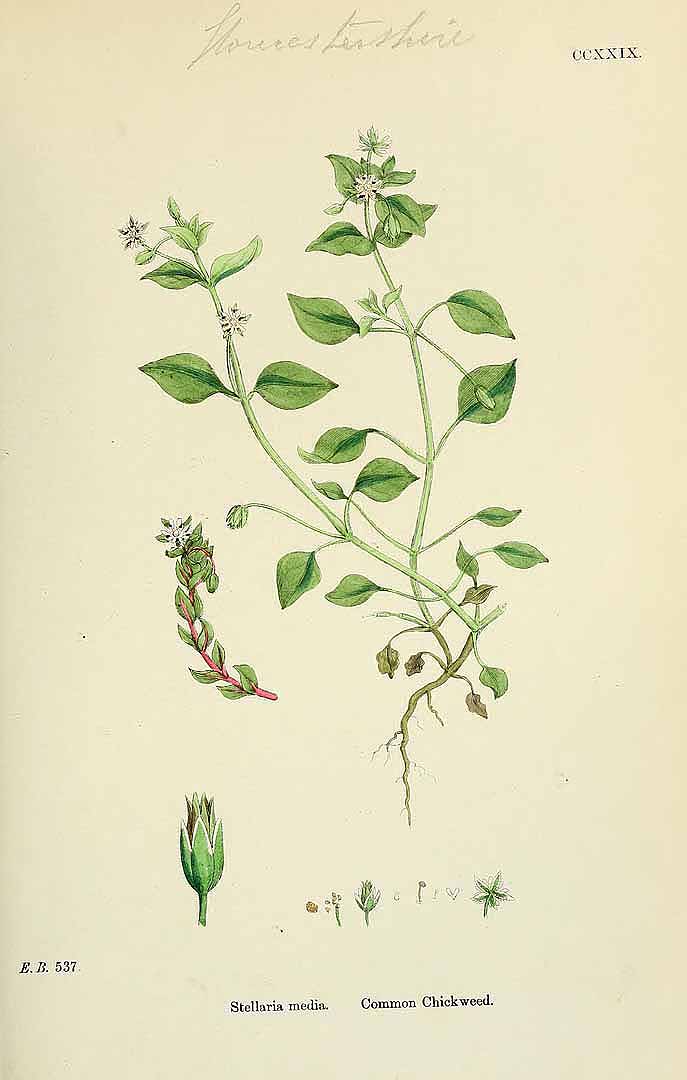
Springtime Medicinal: Chickweed
Chickweed is one of the first greens to appear in the garden and out in nature every year. I was surprised to learn that the herbal plant chickweed grows in nearly every place within the world. Once you learn and understand it’s benefits, you’ll be less likely to pull it up or mow over it and hopefully will become a holistic staple in your arsenal of go to’s.
Chickweed is a prime example of how nutrient-rich herbs can give us a dramatically positive health outcomes with minimal work.
This wild, weedy green is best when eaten, tinctured, made into a tea or tonic for the body to regain and maintain vitality year round. Chickweed is exemplary for skin conditions, both internally, and externally as a salve (see recipe below). It is also beneficial in weight loss, digestion, inflammation, circulation and arthritis.
Chickweed is a common folk remedy for weight loss. Some are of the opinion this works because of the additional fiber in the diet, while others tout it has the ability to disperse fatty deposits. Chickweed is said to inhibit digestive enzymes and slow the absorption of fats and carbohydrates in the body, and herbalists have been using it successfully for generations to counteract dietary constraints and difficulties in weight loss.
Chickweed has a lubricating quality, making it a moist, cool, and soothing herbal remedy to keep on hand. It has been revered as a remedy to bring debilitating conditions such as arthritis, poor digestion and poor circulation back into balance in otherwise healthy individuals. It is known to lubricate throughout the body internally because of its healing properties, as well as externally, to soothe irritation, inflammation in the body and joints, and topically on the skin.
Many Native tribes used chickweed as a poultice to relieve the swelling and pain associated with rheumatism (Moerman, 1998). Fresh, crushed chickweed leaves can be used as a poultice for bruises, burns, sore eyes, pink eye,cuts, bites, and other causes of skin irritation and inflammation. Its cooling nature reduces heat and inflammation at the site of wounded tissues. It is also effective in bringing a pimple to a head or extracting a splinter.
Chickweed works on fluid retention within the body, clearing lymphatic congestion and clearing excess fluid through the kidneys (Wood, 2008). It balances water throughout the body, both clearing excess and preserving what is needed, and supports the kidneys. Chickweed supports movement and elimination of toxins and substances through these organs and systems.
Matthew Wood (2008) describes, “there is no area in the “alterative category” (liver, lymphatics, endocrine, kidneys, skin, intestine, lungs) it does not touch.”
As with any herbal remedy, chickweed is an herbal medicine when used for these specific purposes, and it is suggested you ask your general health care provider before taking any herbal medicinal. While the herb itself highly useful and plentiful, it is always best to consult your qualified health provider as well as the herbalist here, before blindly taking chickweed in any form.
That being said, I have often found that many chronic conditions are positively affected by nourishing the body with nutritive and tonifying herbs.
Eating chickweed fresh in salads, homemade dips, soups, stews, or as a cooked green is as easy as it is delicious. Herbal teas and vinegars also are a great way of enjoying the nutritive qualities of chickweed so you can enjoy it throughout the year.
Due to its moistening properties, chickweed is also a popular remedy for dry itchy skin, eczema, and psoriasis. A salve, or poultice made with chickweed is a commonly used remedy among herbalists along with other anti-inflammatory and soothing herbs like plantain, calendula, chamomile, lavender, rose, and aloe. For those suffering from chronic skin irritations like eczema and psoriasis, chickweed can be helpful if taken internally, such as a tea or tincture and eaten fresh; but it’s always beneficial to find the root cause of conditions of this nature.
Chickweed is a staple in my medicine cabinet as a first aid salve for minor inflamed conditions such as non emergent burns, bug bites,rashes, contact dermatitis, and can precipitate minor cut and wound healing once it has begun to scab over.

Chickweed salve
This is a 2 part process that requires first making the infused oil.
- Place dried chickweed into a mason jar and fill it half way. Fresh herbs contain water and can spoil in the oil infusion method rapidly.
- Add olive oil or any simple carrier oil such as sweet almond or grapeseed oil, and fill to the top.
- Place in warm dry place, or on counter out of direct sunlight and shake it every few days for at least 3 weeks.
- Strain the herbs with cheesecloth into a glass double boiler or a makeshift double boiler with a pot filled halfway with water and glass heat proof measuring cup, so all that is in the glass container is the infused oil.
- Add 1.5 – 2 ounces of shaved beeswax or pastilles to every 8 ounces of oil. You can add more or less depending on how you like the firmness of the salve.
- Test the firmness by dipping a spoon and placing in the refrigerator. If it is too loose, add slightly more beeswax, if it is too firm, add slightly more oil.
- Heat the contents gently on med-low heat until all the wax has melted. Remove from heat, add essential oils (optional) and pour into container.
- Let cool before use.

